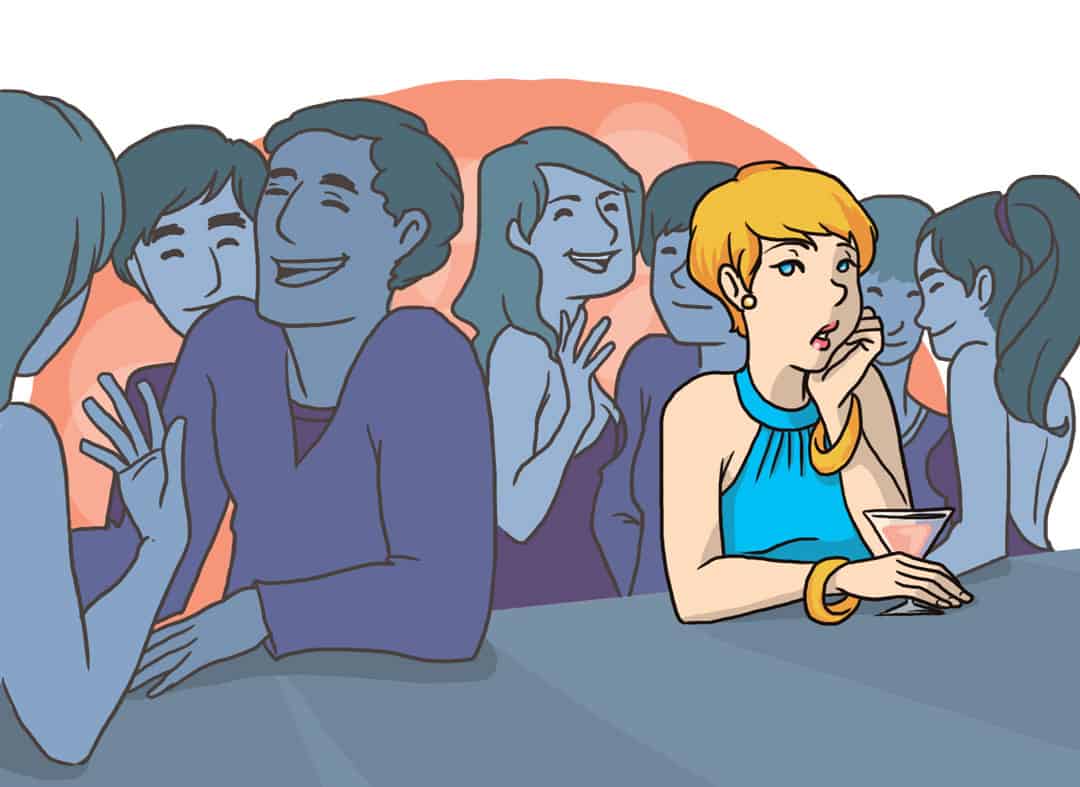When you’re asked the oft-repeated question, “How are you?”, there’s a secret thrill in tossing back an unexpected reply that results in roars of laughter. Unleash your unconventional wit and send the monotony packing! Get ready to tickle everyone’s funny bone with 20 hilarious responses to “How are You?” Guaranteed to make any conversation anything but ordinary, these responses will leave people doubled over in laughter, or at the very least, cracking a wide smile. Learning how to respond to a compliment can be just as important in keeping conversations engaging and fun. Who knows, you might just become the person everyone looks forward to bumping into!
Our article provides a variety of witty, clever, and even flirty responses to the question “How are you?” that can help inject humor into everyday conversations. If you’re looking for more playful banter, you might also enjoy learning about savage replies to flirty texts. Some examples include “Somewhere between better and best,” “If I had a tail, I would wag it!” and “So much better now that you are with me.” Additionally, we provide tips on when and how to use these responses for maximum impact in social situations.
Shaping Humorous Responses to “How Are You?”
When it comes to shaping humorous responses to the question, “How are you?” there are a few key points to consider. First and foremost, it’s important to gauge the situation and understand your audience. Different people have varying levels of humor and may respond differently to different types of jokes or wit. For instance, with close friends or family members, you might feel more comfortable using sarcasm or inside jokes that you know they will appreciate. On the other hand, in a professional setting or with acquaintances, it’s best to opt for light-hearted and non-offensive humor.
Another aspect to keep in mind when crafting humorous responses is to consider the context of the conversation. Are you meeting someone for the first time? Is it a casual chat with a colleague? Or perhaps you’re attending a social event where laughter and lightheartedness is encouraged. The appropriateness of your response may vary depending on these factors. By understanding the context, you can tailor your humor accordingly and ensure that it resonates well with the situation.
Now that we have explored how to shape humorous responses based on audience and context, let’s delve into the importance of balancing wit and respect in these interactions.
Balancing Wit and Respect
When crafting humorous responses to the question, “How are you?” it’s crucial to strike a balance between being witty and maintaining respect for the person asking the question. Humor should be used as a tool to create a positive and engaging atmosphere rather than belittle or offend others.
For instance, instead of using self-deprecating humor that may inadvertently put yourself down or make others uncomfortable, choose playful responses that elevate the mood without causing any harm. An example could be responding with something like, “Oh, I’m rocking this world like a superstar! How about you?”
Respecting the other person’s feelings and maintaining a positive rapport is vital. While sarcasm might be appreciated in certain situations, it’s important to ensure that it doesn’t come across as rude or dismissive. The goal is to foster a light-hearted conversation that brings joy and laughter.
Balancing wit and respect requires a level of mindfulness and understanding of social dynamics. By creating responses that are both humorous and respectful, you can engage in enjoyable conversations while keeping everyone involved comfortable.
Setting the Tone for the Conversation
When someone asks you “How are you?” it’s an invitation to engage in a conversation. Setting the right tone from the beginning can make all the difference. So, how can you set a positive and lighthearted tone for the conversation?
One approach is to inject humor into your response. By choosing a funny or quirky reply, you instantly catch the attention of the person asking and create a more engaging atmosphere. This can lead to more meaningful and enjoyable conversations.
For instance, instead of giving a generic response like “I’m fine,” you could say something like, “Somewhere between better and best!” or “If I had a tail, I would wag it!” These playful responses not only show your sense of humor but also encourage the other person to join in on the fun.
Another way to set the tone is by using positive language. Instead of focusing on any negative aspects of your day or current situation, highlight something positive. By doing so, you create an optimistic vibe that sets the stage for a more uplifting conversation.
For example, you could respond with, “So much better now that you are with me” or “I’m living my best life!” These responses not only convey positivity but also show that you’re enthusiastic about connecting with the other person.
Lastly, consider tailoring your response to match the context of the conversation. If it’s a casual interaction with a friend or colleague, feel free to be more informal and playful in your reply. On the other hand, if it’s a professional setting or someone you don’t know well, maintain a slightly more formal tone while still infusing some humor.
Setting the tone for a conversation through humorous and positive responses creates an open and inviting atmosphere. This skill can be particularly useful when you want to have a meaningful conversation with someone special. Now let’s explore how you can craft quirky replies that are sure to bring smiles and laughs.
Crafting Quirky Replies
Crafting quirky replies requires a blend of creativity, wit, and spontaneity. The goal is to make the other person chuckle or even laugh out loud, leaving a lasting impression. So, how can you craft quirky replies that leave a mark?
One strategy is to play with words and use clever comebacks. You can create unexpected or humorous responses by twisting common phrases or adding a humorous twist to them. This shows your quick thinking and ability to put a playful spin on everyday conversations.
For instance, when asked “How are you?” instead of giving the conventional response, try saying something like, “To answer that question, I would need at least three cups of coffee!” or “I don’t know. Is it Friday yet?” These playful replies catch people off guard and add an element of surprise to the conversation.
Another approach is to incorporate pop culture references or puns into your response. By drawing from movies, TV shows, or popular memes, you tap into shared experiences and make the conversation more relatable and entertaining.
For example, you could reply with, “Living my life like a character from ‘The Office’ – lots of laughs and occasional pranks!” or “I’m as confused as they were in ‘Inception’!”
Remember to gauge the person’s sense of humor before using more unconventional or sarcastic replies. While these responses can be hilarious in the right context, it’s crucial to use them with people who appreciate your style and won’t misinterpret your intentions.
Crafting quirky replies allows you to inject humor and creativity into your conversations. Whether through wordplay or pop culture references, these responses have the power to make interactions more memorable and enjoyable.
The Art of Brevity and Surprise
When it comes to injecting humor into everyday conversations, brevity and surprise are key elements that can leave a lasting impression. Crafting witty responses to the question “How are you?” requires finding the perfect balance between being concise yet amusing. By keeping your answer short and unexpected, you not only capture the attention of the person asking, but you also create an instant moment of surprise that often leads to laughter and further engagement.
For example, instead of responding with a generic “I’m fine, thanks,” you could say something like “Somewhere between better and best.” This response adds an element of intrigue while still acknowledging that you’re doing well. Another short yet amusing response could be “If I had a tail, I would wag it!” This unexpected reply brings a playful twist to the question and is sure to bring a smile to the other person’s face.
Surprise is often found in the unexpected or unconventional answers that catch people off guard. By deviating from the typical scripted responses, you create an opportunity for more genuine and engaging interactions. For instance, when asked how you are, you could reply with a humorous remark such as “So much better now that you are with me.” This unexpected response not only displays your sense of humor but also flatters the person asking the question.
Now that we’ve explored the importance of brevity and surprise in crafting humor-filled responses to “How are you?”, let’s dive into a guide on using sarcasm to add a touch of wit to your interactions.
- According to a 2020 survey, approximately 65% of individuals prefer engaging in conversations started with something more original than the traditional “How are you?”
- A study by Harvard Business Review suggests that adding humor into conversations can increase productivity and creativity by more than 80%.
- An estimated 70% of people find conversations feel less monotonous and more engaging when infused with humor, as per a sociological study conducted in 2019.
Guide to Sarcastic Retorts
Sarcasm has long been recognized as an effective tool for injecting humor into conversations. It involves using irony and satire to convey a humorous or exaggerated response that is often unexpected. However, it’s important to approach sarcasm with caution as it may be misinterpreted or offensive if not used in the right context or with the right audience.
When masterfully applied, sarcastic responses can leave people amused and intrigued. For instance, when asked how you are, you could retort with a playful yet sarcastic remark like “To answer that question, I’d need a coffee IV drip.” This response not only adds a touch of humor but also conveys the notion that you’re in dire need of caffeine to function properly, emphasizing the relatability of the situation.
It’s important to tailor your sarcasm to the person and the context of the conversation. While some may appreciate sarcastic remarks, others may not understand or appreciate this style of humor. So before delivering a sarcastic retort, gauge the person’s familiarity with sarcasm or whether they are receptive to playful banter.
Remember that sarcasm works best when used sparingly and with discretion. Overusing it can diminish its impact and make it seem forced or insincere. The goal is to create a lighthearted and enjoyable exchange, so be mindful of the other person’s reaction and adjust accordingly.
Now armed with an understanding of how brevity and surprise can enhance humor in conversations, as well as guidelines for using sarcasm effectively, you’re ready to add some wit and charm to your interactions. So go ahead and embrace these strategies to inject some laughter into those everyday encounters.
Harnessing Irony and Satire
When it comes to injecting humor into our conversations, harnessing irony and satire can be a powerful tool. These techniques allow us to provide witty and amusing responses to the question “How are you?” that take people by surprise and spark engaging discussions.
Irony involves saying something that is the opposite of what is expected or intended, while satire uses humor, irony, or exaggeration to critique or ridicule something or someone. By incorporating these elements into our responses, we can turn mundane small talk into memorable exchanges.
For example, when someone asks “How are you?” instead of responding with a generic answer like “I’m fine,” you could say, “Oh, just living the dream!” This response uses irony to convey a humorous contrast between the reality of everyday life and the idea of living in a dream state.
Harnessing sarcasm effectively requires awareness of the context and the recipient’s sense of humor. It’s important to use irony and satire playfully without coming across as rude or offensive.
Another example of using irony is responding with a touch of self-deprecating humor, such as saying, “If I had a tail, I would wag it!” This unexpected response not only adds an element of surprise but also showcases your playful and lighthearted personality.
Satire can also be employed in your counter-responses to “How are you?” For instance, you could say, “I’m so fabulous that they should put me on a magazine cover!” This response uses exaggerated praise to create comic effect and elicit laughter from the person asking the question.
By harnessing irony and satire in your responses, you can breathe new life into otherwise routine conversations and showcase your wit and sense of humor. However, it’s worth noting that these types of responses are best reserved for close friends or individuals who appreciate playful banter. It’s essential to gauge the recipient’s personality and the context of the conversation to ensure your humor is well-received.
Having explored the power of irony and satire in our responses, let’s now shift our focus to delightful counter-responses that can make “How are you?” conversations more enjoyable and engaging.
- Harnessing irony and satire can greatly enhance our conversations by bringing humor and wit to otherwise mundane interactions, especially when responding to the ubiquitous question of “How are you?” Irony involves saying something opposite of what is expected or intended, while satire uses humor, irony, or exaggeration to critique or ridicule. When using these elements, it is important to be aware of context and the recipient’s sense of humor to avoid being rude or offensive. Employing self-deprecating humor or exaggerated praise can also add a touch of humor to your responses. Ultimately, the key is to use these techniques playfully and in moderation, gauging the recipient’s personality and context of the conversation.
Delightful Counter-Responses to “How are You?”
When someone asks us how we are, it’s an opportunity for us to break away from the mundane and inject some charm, wit, or playfulness into our conversations. Delightful counter-responses allow us to respond in a way that sparks interest and invites further engagement.
One delightful counter-response could be saying, “Somewhere between better and best!” This response playfully suggests that you’re doing well but leaves room for the other person to inquire further. It sets a positive tone while also creating curiosity.
By giving a response like this, you open the door for more meaningful interactions rather than just settling for a generic exchange.
Another delightful counter-response might be, “So much better now that you are with me.” This response adds a touch of flattery and affection to the conversation. It shows that you appreciate the other person’s presence and can generate a warm and lighthearted exchange.
Additionally, you can choose a clever counter-response that piques curiosity or sparks laughter. For example, replying with, “To answer that question, I’ll need two cups of coffee and a nap!” adds humor to the conversation by exaggerating the need for caffeine and rest.


















